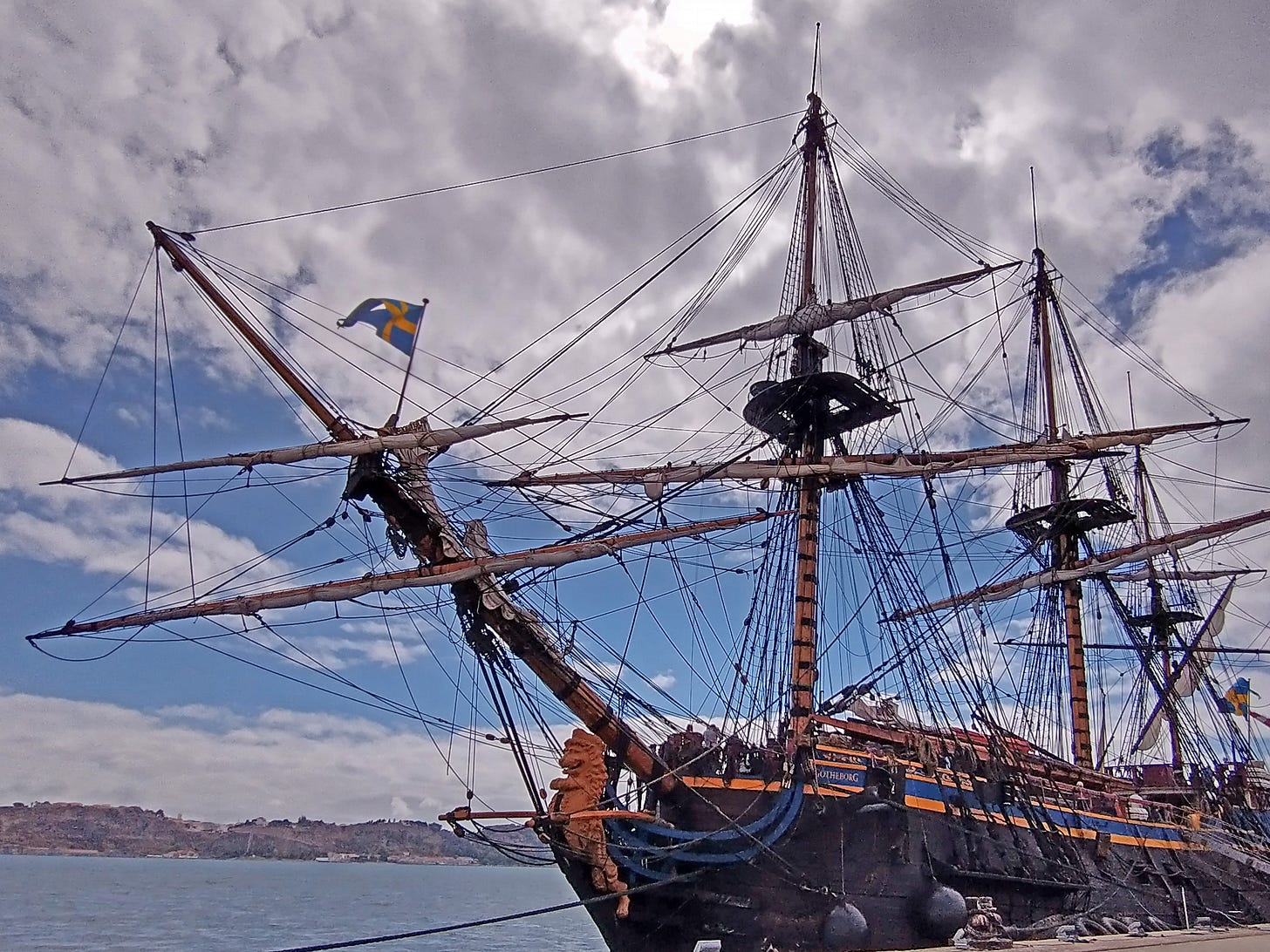We were both born and raised in New England. We’ve lived all our lives not more than 100 km from the ocean. With the exception, of course, of the last 12 years in St. Louis, which, granted, is a major river port, but not so much an ocean-going one.
Lisbon is a fine ocean port, with a lovely harbor. At least the Phoenicians thought so, and they established the first commercial port - in 12 century B.C. Today, the Port of Lisbon is still active with cruise ships and commercial shipping - yes, those big container ships. Good luck trying to draw up a better harbor port than the mouth of the Tagus River on the western coast along the Atlantic, between Europe and Africa, and oh, yes, the Mediterranean!

This past week it welcomed the tallest of the still-sailing tallships, the Götheborg. Naturally, we went to join the greeting.
To get there we had a lovely walk down to the harbor, 3 km (~1.86 miles) from our apartment. Well, that’s the point at which we were able to see water. Along the way we passed under one of the 127 arches for the Free Waters Aqueduct.
We also saw Parliament. Unfortunately, the uniformed guards (at the top of the stairs and wearing white hats as part of their uniforms for those who are blowing up the picture) were not doing their maneuvers. Plus one of us was not patient enough to wait!

Once we hit the waterfront, we had to walk along the mostly-hidden-from-view harbor, cross the swinging pedestrian bridge, and continue on the loooong dock.
Our reward:
The Götheborg I is famous for running aground in its own harbor in 1745 after a long (~2 years to China) voyage, while being captained by a respected pilot, in calm weather. A phenomenon known as dead water is theorized to be the cause. Essentially the ship suddenly veered onto a well-known rock, destroying more than half the cargo before the rest could be salvaged. And so concluded her 3rd voyage.
Yes, they built a ship, and it only made 3 trips. But get this - it still made money. (Probably enough money that someone decided to build it again, in 1786. Thus this ship is actually the Götheborg III, although everyone calls it the Götheborg II. But then not everyone has paid the 15€ to tour the ship, or read the blog 😉.)
History buffs being like they are, they simply couldn’t stand it being so tantalizingly close to shore, so Götheborg I was excavated in 1984. Roughly ten years after that, work began on a detailed, historically accurate reconstruction. A decade later today’s Götheborg was ready to sail. Its maiden voyage was 2005 - 2007, hosting presidents and diplomatic missions galore.
The sailors on board, a combination of professional crew and volunteers giddy and yet overwhelmed at being there, were helpful in answering our non-stop questions: what is this, how does it work, what do you do on board?
We cheated for our trip home and took the bus. We rely on an app called Citymapper that shows you a variety of routes, how long they will take, and how much they will cost. We had seen that there was a bus from the subway stop near our apartment at Rato (pronounced Rhatu). On our way home, just at the bottom of the 3 km hill, we saw the same bus and hopped on. Niftily, the bus stops display a timer of how long until your bus comes. So does Citymapper, but the bus countdown may be more accurate. This may be a game plan for the future: walk downtown and then take public transit back home!
That’s all for now!
Love from Lisbon,
Scott & Amy








Love the story of the ship's captain! He's relatable! We've all had a rock jump right in front of us with no warning! Imagine the years of ridicule at the local pub! Poor man.
Was Josie allowed on the bus? Fascinating boat/history. Wish I could still walk. You two must be super fit by now. Phyl